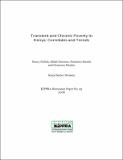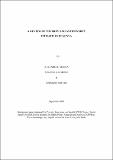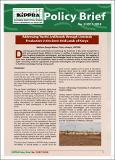| dc.description.abstract | The pattern of poverty incidence in Kenya has changed over time, with some households moving in and out of poverty while others or their descendants have remained in poverty for decades. Rural poverty, for instance, increased from 46 per cent to about 60 per cent between 1990 and 2000, while urban poverty rose from 29 per cent to 51 per cent during the same period. In 2005/06, poverty incidence was estimated at 47 per cent, with 49 per cent of the rural population being in poverty compared to 35 per cent in urban areas. This study analyzes factors associated with chronic and transient poverty in Kenya. The study uses data of a synthetic panel of households constructed from the 1994 and 1997 household surveys. The results show that household size, educational attainment, asset ownership, and labour employment are the main correlates of poverty. Large households in rural areas face higher poverty risks than urban households. University education, wage employment, and physical assets are associated with low poverty probabilities. Working as a casual worker in the manufacturing sector is positively correlated with chronic poverty. Interventions for breaking poverty traps in Kenya include provision of post-primary education; creation of remunerative employment; upgrading of skills through on-the-job training; empowering communities to own assets,
especially after a natural disaster or political instability; increasing agricultural productivity; and improving markets for livestock in semi-arid areas. | en |




